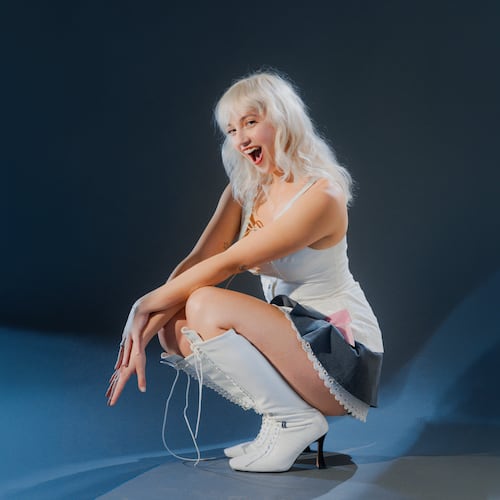SEATTLE — You really shouldn’t ignore a genuine light-bulb moment — that “Eureka!” shriek of insight and vision, a gift of rare inspiration. And when that moment materializes in the form of two black-and-white lamps, which actually hold light bulbs … well. That is about as literal a nudge as you’re going to get.
Interior designer Barbara Hyde Evans (Hyde Evans Design) embraced the illuminating lamps and the moment — and now, the second-story addition of her classic Capitol Hill home is decked out in striking black and white: wallpaper (on walls and ceilings), paint, upholstery, trim, draperies, linens, rugs, tiles and (of course) light fixtures.
“It started with those darn lamps — the style, the polka dots, pretty traditional,” Hyde Evans says. “I found them in Palm Springs at an antiques store and fell in love. I brought those home and thought I’d do the whole room around them.”
Or, you know — maybe the whole floor.
The upper level of her 1910 home, which she shares with her partner, John, had been just two small dormer bedrooms and a bath, Hyde Evans says, before architect Herschel Parnes “took the top front off of it and bumped it out and up.” It’s now a roomy, light-filled, view-capturing living space, with a master suite/office, a bedroom for her grown son, a guest bath and laundry.
And one overarching color scheme.
“I love contrast. I put it in everybody’s home, too,” Hyde Evans says of her clients. “You start with black and white or charcoal and cream and fill in other colors. This one, I thought: ‘Hell; do it all out.’”
“All out” leaves openings for just one single, purposeful splash of color per room, she says: “The smaller the color, the more it pops.”
So in the master bedroom, where those original-inspiration lamps flank a four-poster bed (once gold-tinged, now painted solid black), a can’t-miss casual green throw waves hello, as does the red-rose square pillow on a chair in the adjoining office. In the master bathroom, under a raised, wallpapered ceiling housing two hollowed-out light-fixtures-turned-skylights, silvery nickel fixtures used to pop with metallic confidence — until they turned on Hyde Evans.
“The bathroom had been all nickel everywhere,” she says. “It turns out I had an allergy, and I didn’t know that. I had to change out all the fixtures. Now I warn people.”
Clients’ projects come together on the lower level of Hyde Evans’ home, where she and six employees work — but it’s a brand-new challenge, she says, when you’re designing all your own cabinetry, built-ins, walk-in closets, surfaces, trim and décor.
“It’s the hardest thing in the whole wide world,” she says. “It was a new space. It’s easier to walk in with new eyes. In a space you’re living with, it’s hard to have new eyes. With a client, it’s fresh and new. I do a stylebook with them to know who they are. I know myself a little too well. I like every style. To get one to narrow down, I try to design to the house as much as possible, with a juxtaposition of modern elements thrown in.”
So in the bedroom, she says, a “recently added modern bench adds a more transitional look,” bracketed historically and aesthetically by an antique chandelier, a French nightstand, and trim that matches that around the downstairs living- and dining-room windows. In the office, an antique piece inspired the bookcases she designed; the chandelier and desk are actual antiques; and the six more-modern (and more-personal) framed pieces of art on the charcoal-gray wall are by her son, Sam Hyde Evans, now 26 (but only 10 or 12 when he created them). On the second-floor landing, Sam’s blown glass contemporizes an antique Demilune table and mirror, and a new “giant support beam” allows for 9½-foot ceilings here, just like downstairs.
It’s another inspired injection of continuity into an enlightened study of contrasts.
About the Author
Keep Reading
The Latest
Featured


